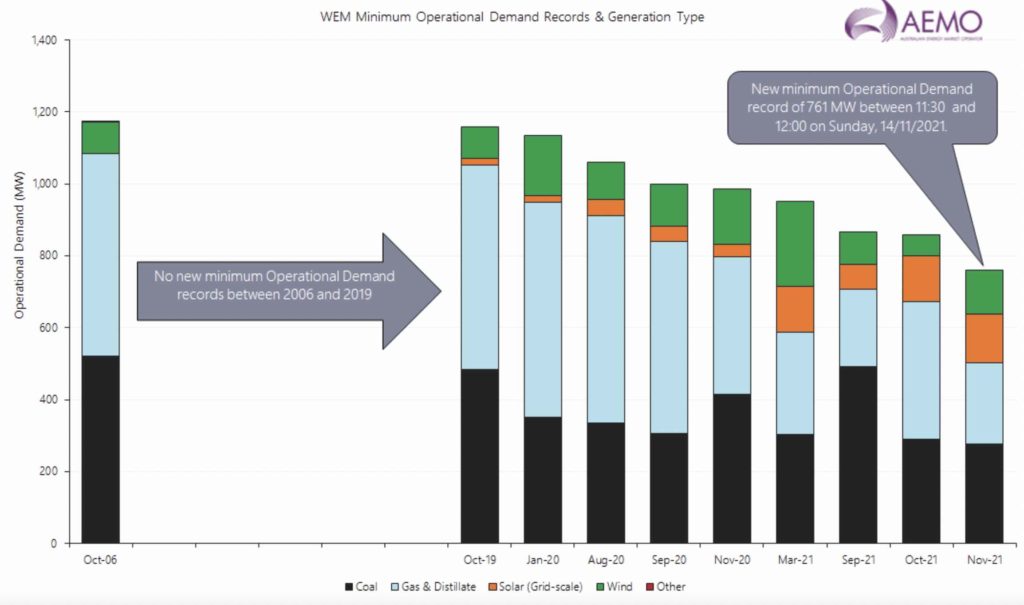Minimum demand levels in Western Australia’s main grid have been crunched to new lows by the growing impact of rooftop solar, as major industrial outages offset the impact of warmer weather and some air conditioning load.
The Australian Energy Market Operator says that minimum demand set a new record low of 761MW on Sunday for the SWIS (the South West Interconnected System, the main grid that covers WA’s south west).
This was down considerably from a new record low of 840MW set just last week, and continues a trend from 2019 when the surge in rooftop solar started to reshape the demand and generation profile of the local grid.
“Despite the mercury reaching above 30 degrees in Perth this weekend driving some air conditioning load, major industrial outages resulted in another minimum demand record of 761MW on Sunday for the SWIS,” AEMO said in a Twitter post on Monday evening.
Those industrial outages were apparently planned closures for maintenance, but rooftop solar at the time was delivering 1516MW, or two thirds of total demand.
The fall to 761MW of “operational demand” takes it close to the levels where AEMO says the ability to operate the system securely in put at risk.
That level has progressively been scaled down thanks to better understanding of technology options: It was 700MW in 2019 and has recently shifted to 600MW – but the growth of rooftop solar will surely mean those levels will be reached within a year or two.

The minimum demand levels experienced in WA are significantly higher than in South Australia, which has recently set a new record low of 220MW, and where the local distribution network recorded four hours of negative demand in late October.
But the challenge in WA is that it is a big and isolated grid, which means it cannot export surplus capacity and the market operator is forced to juggle the number of synchronous generators that it needs to maintain grid security.
Unlike South Australia, WA has no grid scale batteries (although it is soon to build its first near Kwinana and it does have a growing network of “community scale” batteries), and no synchronous condensers, which could provide system strength without the need to burn gas, or coal.
It does have a reasonably advanced demand response program, operated by Western Power, which is to be expanded. This encourages users to shift their load requirements to the middle of the day.
Interestingly, the main generation company in the SWIS, Synergy, had a lot of small gas turbines running on standby at the times, presumably because they could respond in quicker time than the bigger gas units.
The inability of the gas units to respond quickly to changes in demand, or output of rooftop solar PV, is one of the reasons cited for the 100MW/200MWh big battery it will build at the site of the closed Kwinana power station. It will be the first grid scale battery to be built in the SWIS.










